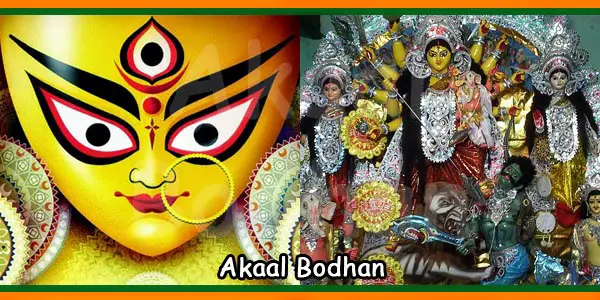Devi, the great Hindu goddess and the divine partner of Shiva, is worshipped in different forms based on her two aspects namely, compassion and ferocity. Her manifestations have different names and meaning. The compassionate forms are Uma (light); Gauri (yellow or brilliant); Parvati (the mountaineer); and Jagatmata (the Mother of the world). The frightening forms are Durga (the inaccessible); Kali (the black); Chandi (the fierce); and Bhairavi (the terrible).
Descent of the Goddess:
The first appearance of the great goddess was in the form of Durga, a beautiful fighter seated upon a tiger. The reason for her amazing manifestation was the domination and cruelty of demon Mahishasur, who attained unbeatable strength through extreme severities. Gods were afraid of him and even Vishnu or Shiva could not conquer him. He remained unbeaten and it was clear that Mahishasura would be defeated only by the combined energy of Shakti and it was Durga who fought the battle.
Battlefield:
Seated on her ferocious mount lion and fully armed with the miraculous weapons gifted to her by other Gods, Durga went to combat the demon Mahishasura. Being the aggressive aspect of the goddess Shakti, the role of Durga was to combat and conquer evils and also manifest the female aspect of any male deity. In a terrific battle, she killed demon Mahishasura and reinstated heaven to Gods. From then onwards the goddess is worshipped whenever protection from evils is necessitated. Durga Puja is performed in her honor to celebrate the victory of good over evil.
Revered Mother:
It is believed that Durga has been worshipped in our country over centuries, most probably from 400 AD or earlier, till now. Durga is mentioned in the epics Mahabharata and Ramayana, puranic texts and Vedic literature. In Northern India Durga is regarded as a kind hearted bride characterising family unity, whereas in Southern India she is admired more as a terrific fighter.

